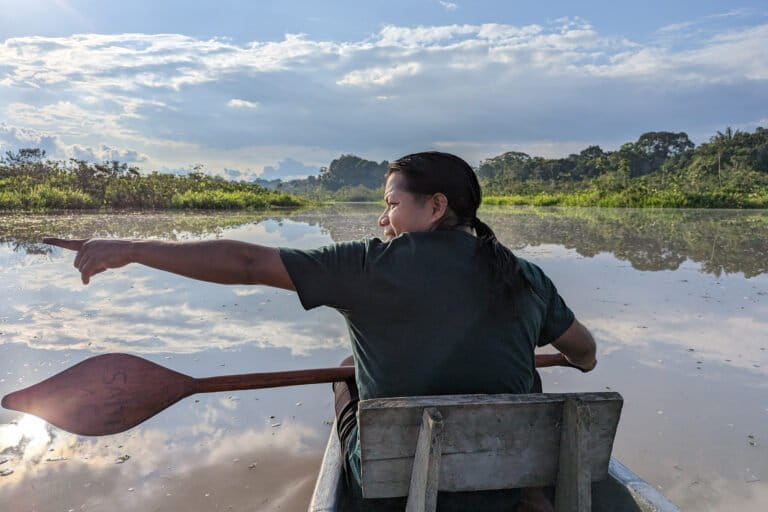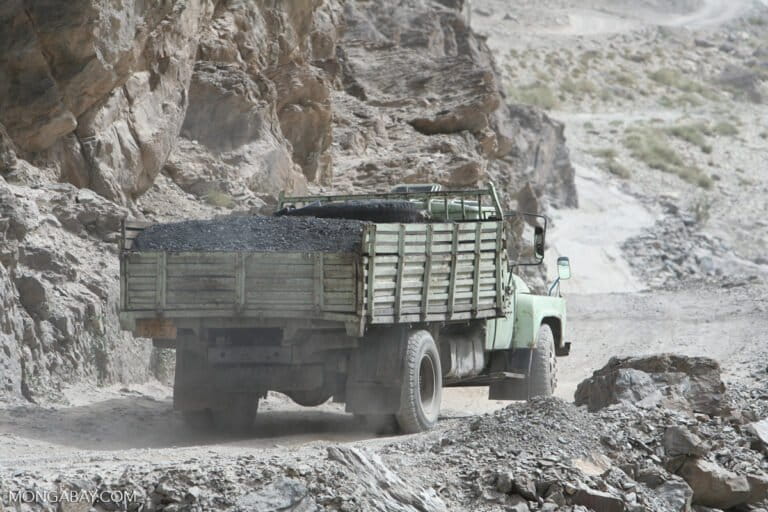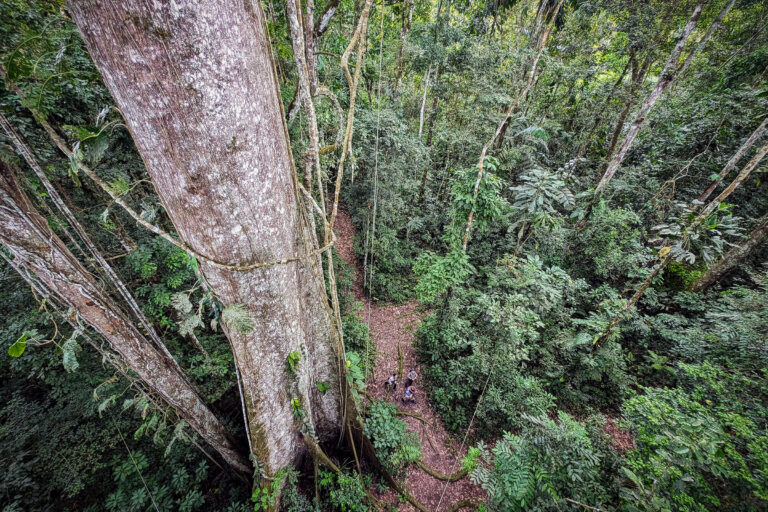- A simple user-friendly mobile phone system has helped villagers near two Indian national parks report crop and livestock damages to authorities and receive appropriate compensation.
- Such damages can lead to retaliatory killing ofanimals, whereas compensation can help foster tolerance of wildlife even in densely populated regions.
- The mobile technology used by the Wild Seve project speeds the compensation processes using a toll-free hotline that records the victim’s voice message with details of the incident and routes it to a field coordinator, who sends local trained responders to meet with the complainant within 24 hours.
Watching a majestic tiger, elephant or leopard in the wilderness of Bandipur or Nagarhole National Park, is dream come true for many. Nestled on the foothills of southern India’s Western Ghats, one of the 35 global biodiversity hotspots, these protected forests are treasure troves of wildlife. But for 36-year-old Swamy Pappanna, these wild animals are reasons to panic, rather than cheer.
A traditional farmer, his native village Kundkere lies two kilometers from Bandipur National Park. There, he owns about 1.9 hectares (4.7 acres) of land and grows bananas, onions, potatoes, sugarcane, millet, and groundnuts for a living. However, wild elephant herds have marauded his crops for the last seven years, causing him losses worth US$985 (70,000 Indian rupees). The proximity of his village and fields to the park and to traditional routes taken by Asian elephants as they disperse from one forest to another—combined with degradation of those forests and expansion of agriculture in the area—have increased encounters between elephants and people.

Twenty-two of India’s 29 state forest departments have compensation schemes to help farmers who have lost crops or livestock to wildlife. Swamy had repeatedly approached the regional forest department for compensation, spending enormous time and money documenting his losses and arranging logistics for filing his claims without success. One day, he lost his cool and locked up five forest guards for three hours in their office for alleged inaction.
However, Swamy is a smiling man today. A user-friendly toll-free helpline run Wild Seve that can be reached through any mobile phone has helped him not only record and file his damages with the appropriate forest department authorities, but also receive his compensations. He has so far received US$685 (Rs. 48,600) in seven cases, which he said was unimaginable in the past.

Like Swami, at least 5,685 people living in villages bordering the two parks have received compensation, totaling more than US $233,000 (Rs. 16,153,000), since the project’s inception in July 2015. The cases largely pertain to crop losses, property damage, and livestock predation by tigers and leopards, with a few cases of human injuries or deaths.
A high-density problem
“The two protected areas of Bandipur and Nagarhole have one of the highest global densities of tigers, elephants and leopards, besides harboring other endangered species such as dholes (wild dogs) and feral pigs” said Dr. Krithi Karanth, who founded the project.
These populations face a high human population density of 443 persons per square kilometer residing on the fringes of the two parks. Villagers’ high livestock density (337 per square kilometer), along with expanding agricultural fields and community lands, are shrinking the wildlife habitat. Such expansions result in wild animals, including tigers and elephants, moving between forest patches and “straying” into villages. This leads to extensive human-wildlife conflict, said Karanth, an associate conservation scientist with Wildlife Conservation Society in the U.S.

A study conducted by Karanth and colleagues with 1,972 households from 1,371 villages located around five tiger reserves in the Western Ghats, including Bandipur and Nagarhole, corroborated the situation. According to the study report, crop loss emerged as the biggest challenge, reported by 64 percent of households. Another 15 percent of cases reported livestock depredation, and the rest related to miscellaneous incidents of property loss, human injuries and deaths. What proved to be an eye-opener for Karanth and her colleagues was, despite having a compensation mechanism in place for conflict victims, only 31 percent of the affected households actually managed to get their losses compensated.
“The study enabled me to understand the complexities of human-wildlife interactions and how compensation has a major role to play in developing tolerance of the villagers toward wildlife and check retaliatory killings by irate villagers,” Karanth said.
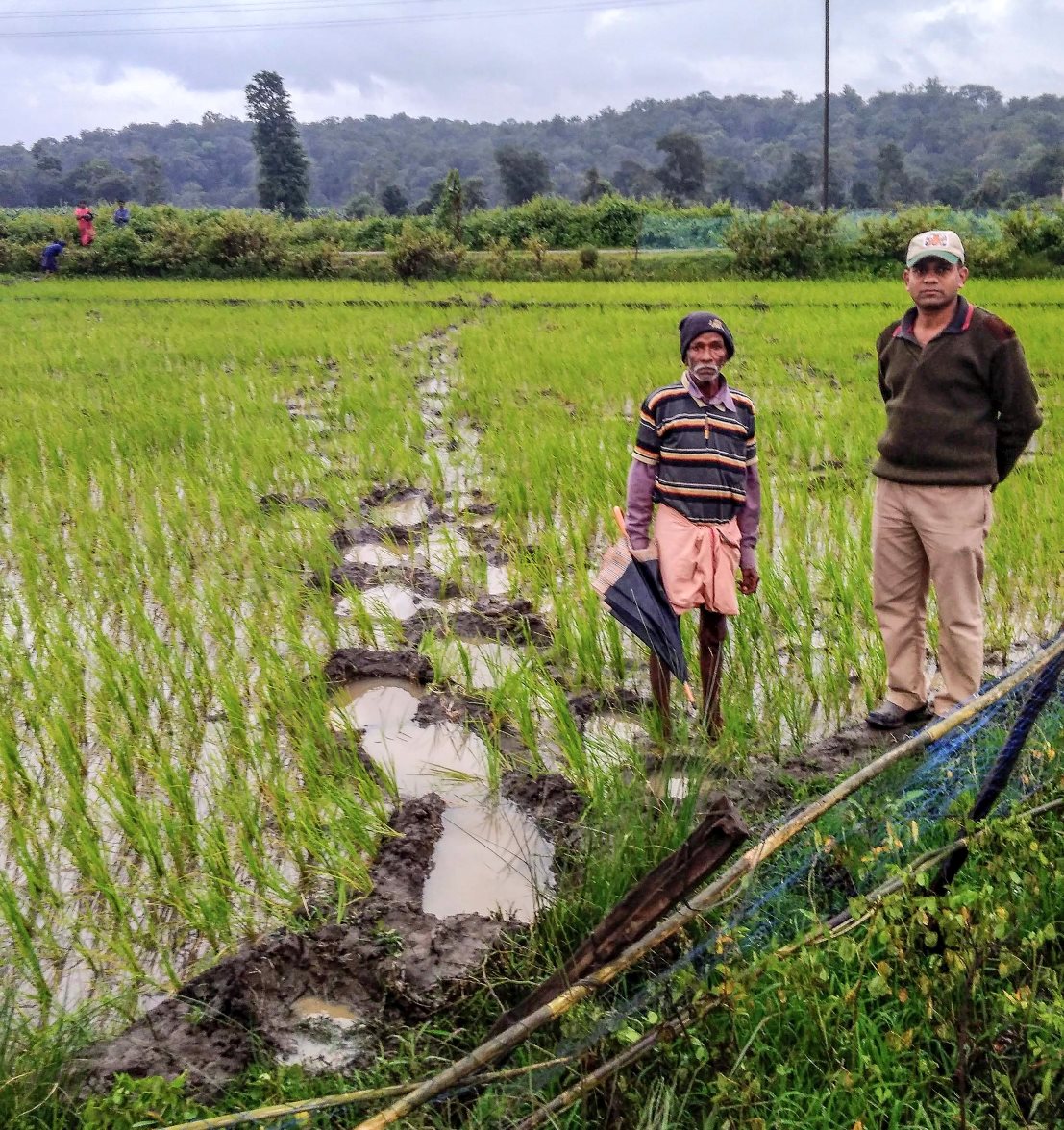
Accordingly, Karanth and the Centre for Wildlife Studies (CWS), a conservation research non-profit, started Wild Seve as a conflict response and compensation claim assistance project for the poor marginalized farmers living in 284 villages near the two parks. The 11-member team has also begun to proactively develop predator-proof livestock sheds and identify at-risk farmers based on their conflict history.
A low-tech solution
The Wild Seve technology is basic, user-friendly and developed in the local Kannada language. Field teams present the hotline during village publicity drives in conflict hotspots. After a negative wildlife encounter, the victim calls a toll-free phone number (1-800-200-1266) and leaves a voice message with details of the incident, which is routed by an automated call center to a CWS coordinator. Trained responders, located strategically in the affected areas, reach out to the complainant within 24 hours.

Setting up the system with villagers, however, was not easy, recalled Wild Seve field assistant Chikiningaiah CK. “The local villagers were initially disillusioned and even hostile, due to persistent damages they suffered over the years. Hence, introducing them to the technology, explaining and convincing them of the efficacy were the preliminary challenges,” he said.
Each time a field assistant rushes to a complainant’s home, the initial reaction is that of obvious distress and anger. “They show us the damages, how their crops have been raided by elephants or their goat killed by leopard or their home damaged….However, when we give them a sympathetic hearing, take photographs of these damages and record their statements, the victims are much pacified,” said field assistant Nagachandan HN.
The number of complaints peaks during the crop ripening months between October and February, when there can be as many as 30 to 40 calls per day. “Nonetheless, we aim at reaching them within three to four hours or within 24 hours during rush periods,” said Wild Seve field assistant Santosh Kumar.
The situation began improving gradually, as the project efforts produced swifter compensation, and as the villagers realized that someone was listening to their grievances and helping them to file their claims to the state forest department free of cost.

“This is resulting in trust and confidence-building among the beneficiaries, with villagers such as Nanjundaswamy from Ballurahundi near Bandipur making as many as 44 calls in separate incidents to report of his crop loss,” said Kumar. “Seve” in local Kannada language means to serve. True to its name, the project has today reached more than half a million people across 600 villages, which are among the worst conflict-prone in the country.
“The problem of man-animal conflict in these villages is a chronic one and is unavoidable too, due to growing biotic pressures around the reserves,” said Naveenkumar NP, a forest officer at Bandipur National Park. Speaking to Mongabay by phone, he said that the poor farmers living around the parks try hard to mitigate conflict impacts by putting up various types of fences, staying up at night at tree-top posts to monitor their fields or corralling their livestock at night, with little success.

The solution, he said, lies in helping the villagers to co-exist with the wildlife moving through their villages by paying adequate compensation, within a reasonable time frame, so that they do not resort to retaliation. However, he admitted that due to growing work pressures, it becomes difficult to attend to all conflict cases.
Naveenkumar likened Wild Seve to an intermediary between the affected villagers and the forest department that has helped create much-needed mutual understanding and trust. It has also streamlined the process of filing compensation, with proper protocol and transparency, he added. Although initially the reports of damages were jotted using paper and pen by the attending field assistants, in 2017, the team began using Open Data Kit (ODK), a suite of open-source tools for collecting field data on Android smart phones.
The current ODK data collection system, according to Karanth, has three main components. The first creates and customizes damage forms, and the second, a smartphone interface, hosts these forms and collects data from the complainant. Finally, a server receives and stores the completed form submissions.
The earlier paper reports have been digitized, and the team now uses the R statistical software to analyze the data from their visits.
“We have set up customizable and adaptable data collection forms that handle spatial, visual, and textual information,” Karanth said. The forms can be configured to display questions in the field staff’s native language. The responses of the villagers are also stored in a machine-readable format.
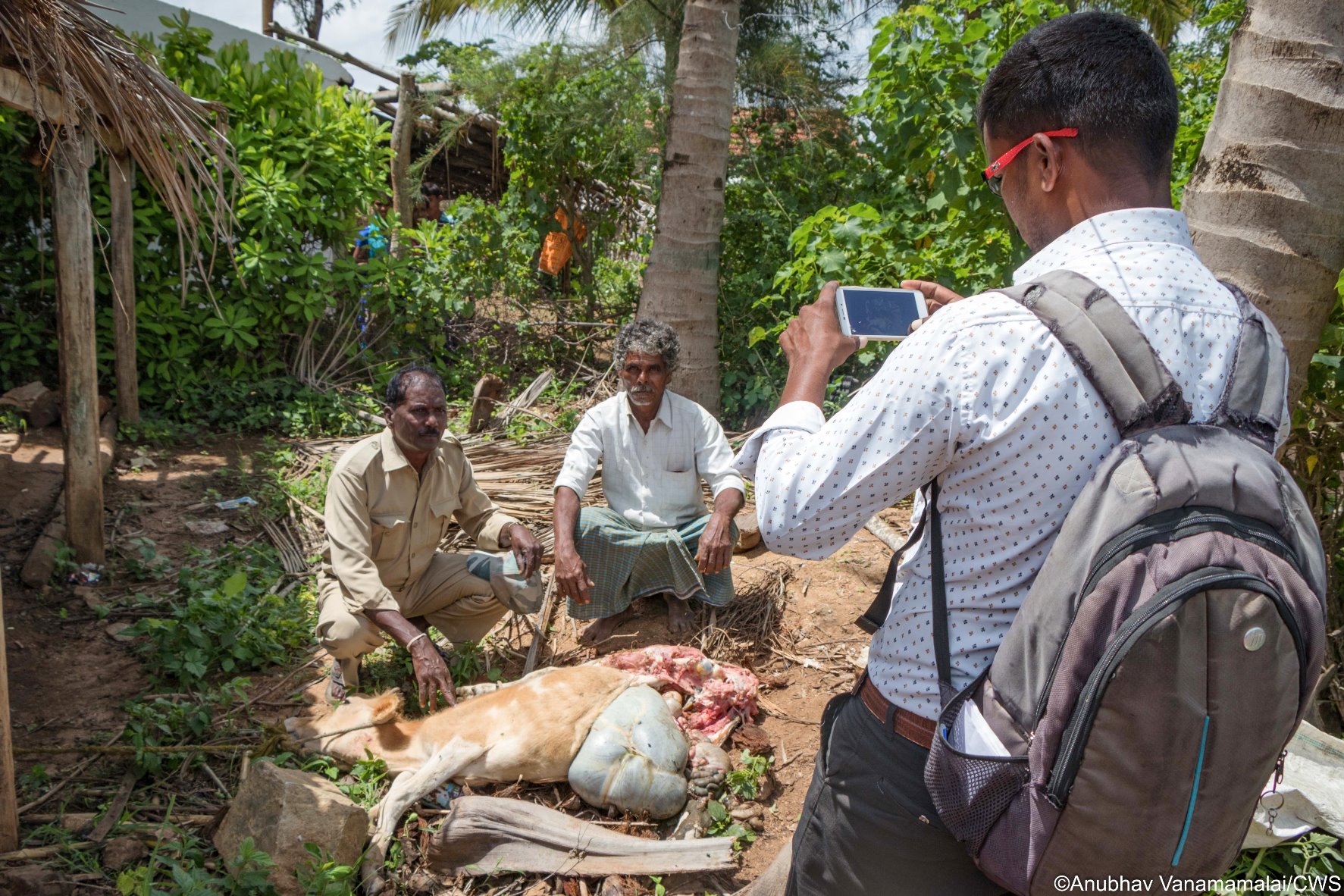
The system requires no coding skills and stores data collected from the village visits until it finds a cellular network, a key feature for use in India’s remote and often poorly connected villages. It enables staff to upload forms whenever a network is found and to travel light, as they don’t need to carry multiple data collection devices.
“With significant reduction of paperwork, we could focus more on the individual concerns of the villagers and following up on the details of their damages and claims,” said project coordinator Ghanshyam Iyer. The technological advancements also eliminated manual translations, he added, which resulted in marked decrease in submission errors.
“The transition to Open Data kit for collecting field information has improved the project logistics, whereby the collected data is more reliable, easily verified and quickly processed,” said Anubhav Vanamamalai, one of the project scientists.
They can now track the frequency of calls from a particular region to monitor and assess its vulnerability. And, he added, the technology can be scaled and customized to suit similar high-conflict zones elsewhere. However, project members are concerned about sustaining the field response teams over the long term, for which they suggested enhancing public-private partnerships.

For now, Ravi Kumar and other forest guards are pleased that Wild Seve can keep villagers like Swamy Pappanna smiling, even after crop raids. “The project generates good will and tolerance among the local communities towards wildlife and its habitat. But, most importantly, it has spared us of having to face their wrath and aggression after such incidents as before,” Kumar said, much relieved.
FEEDBACK: Use this form to send a message to the editor of this post. If you want to post a public comment, you can do that at the bottom of the page.






